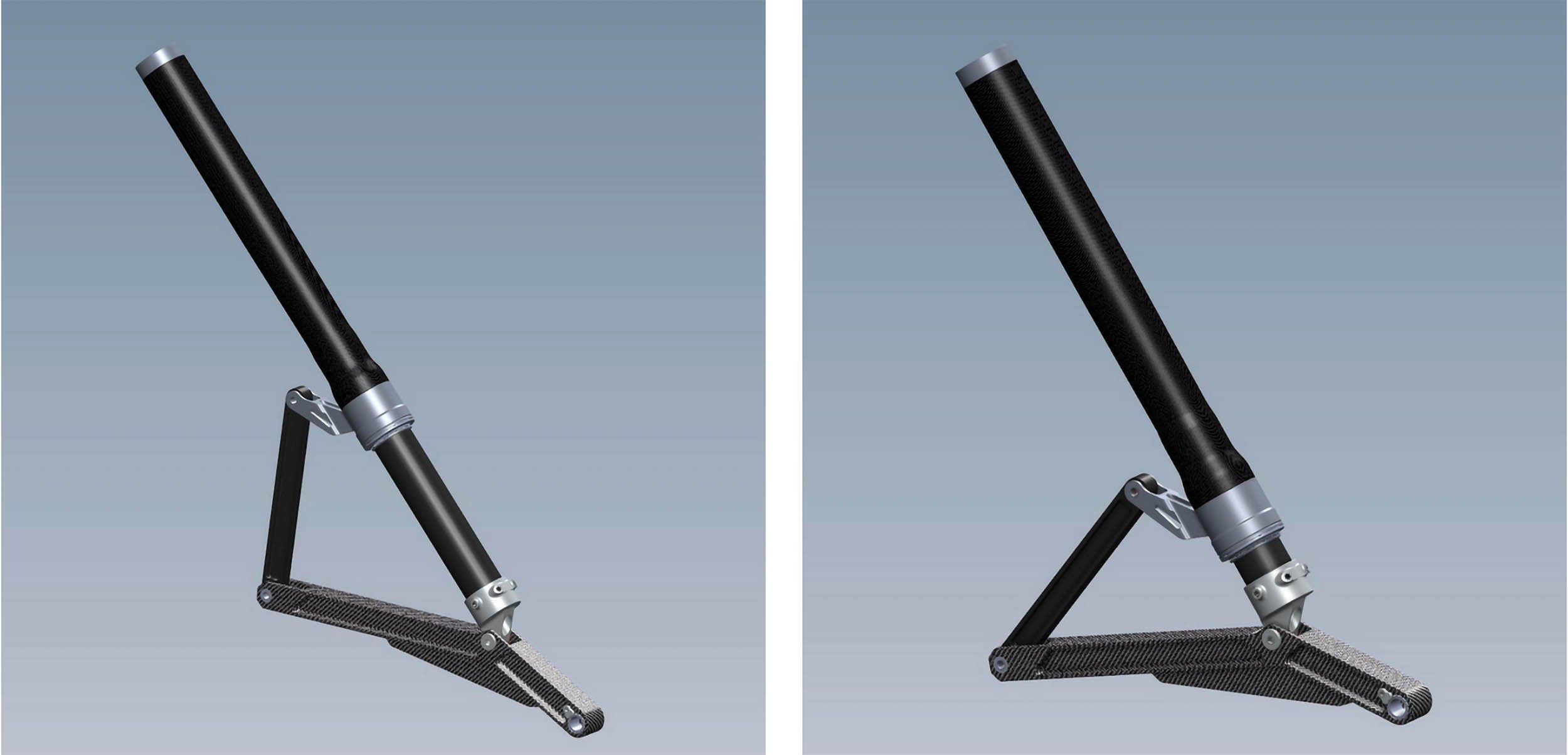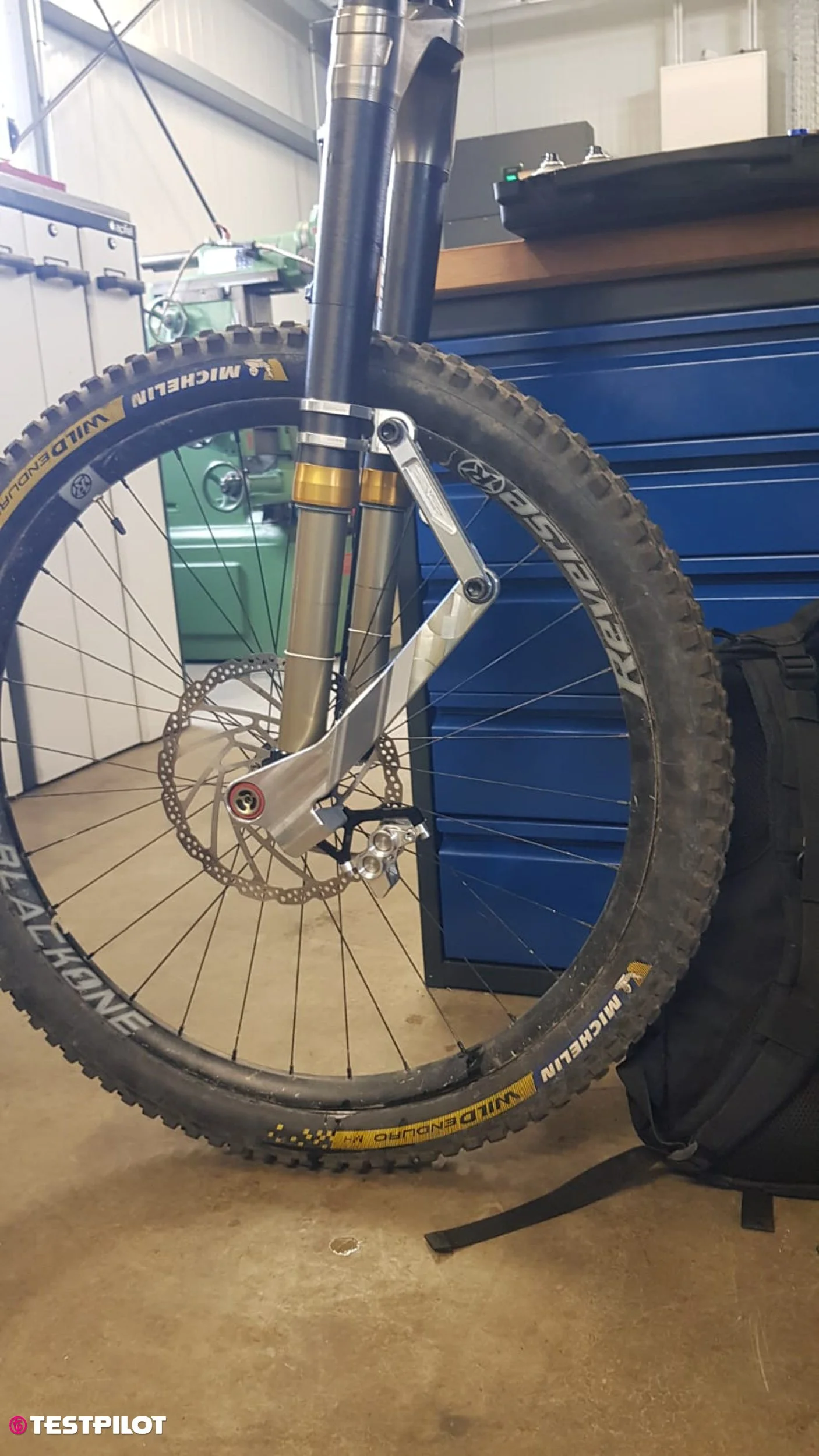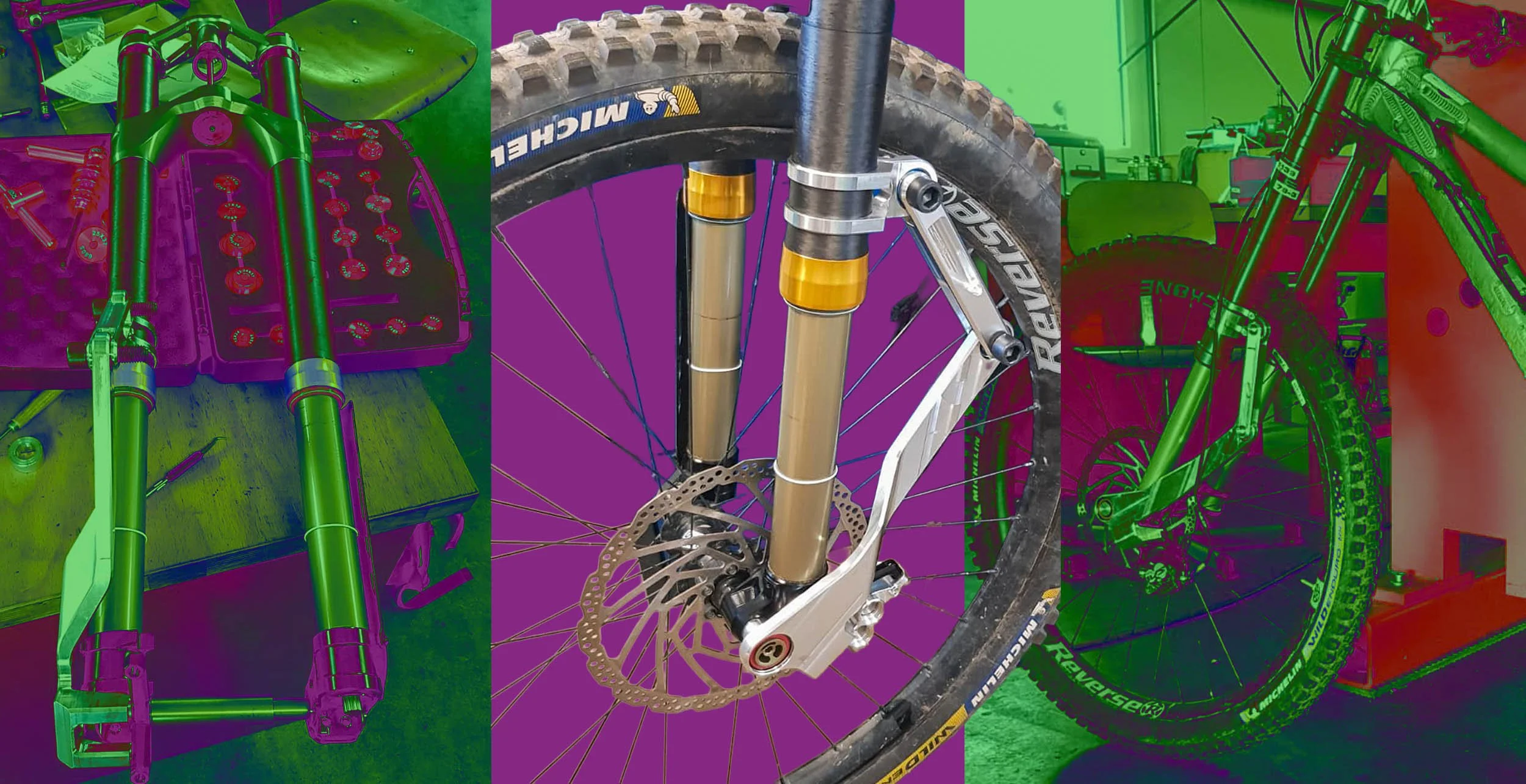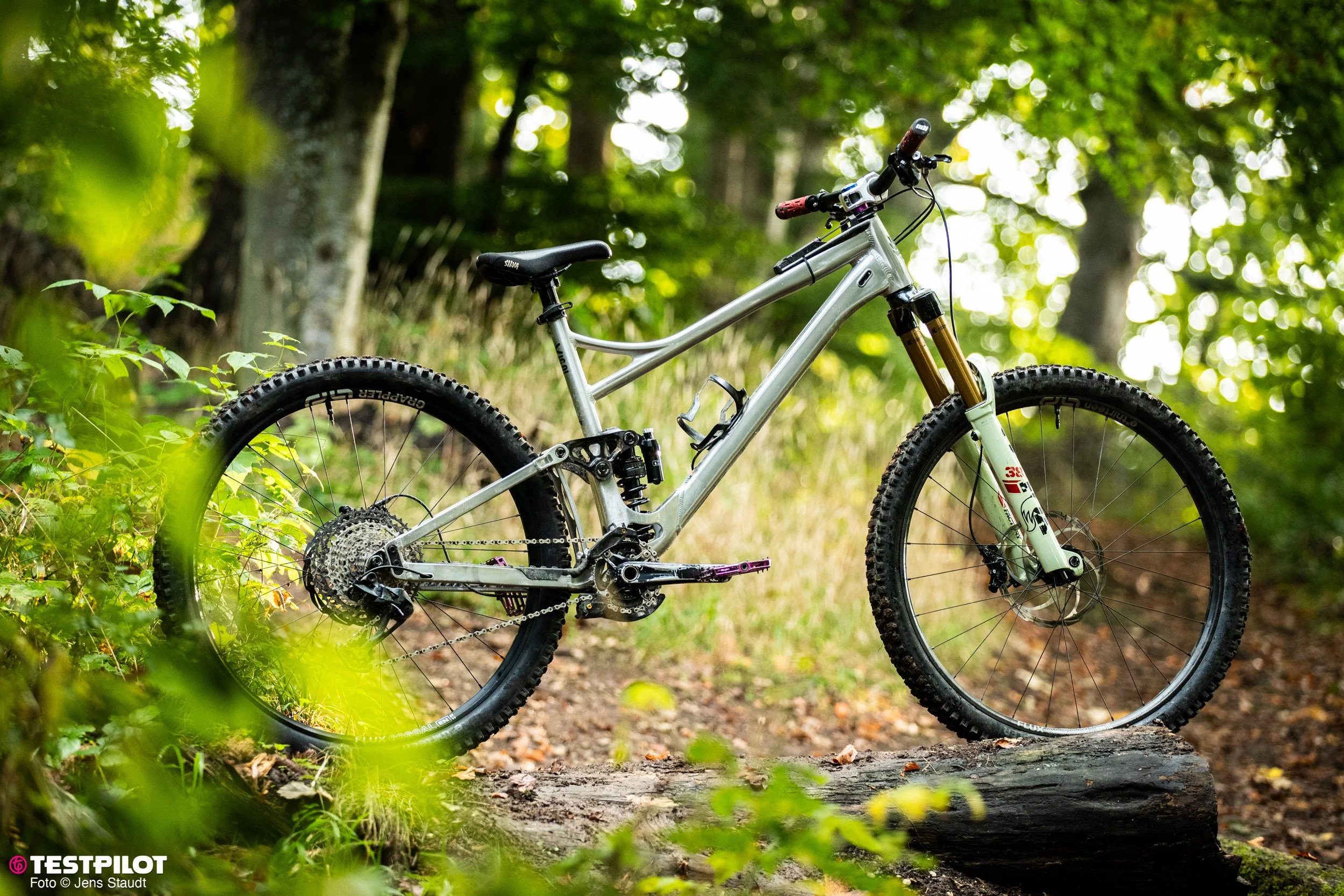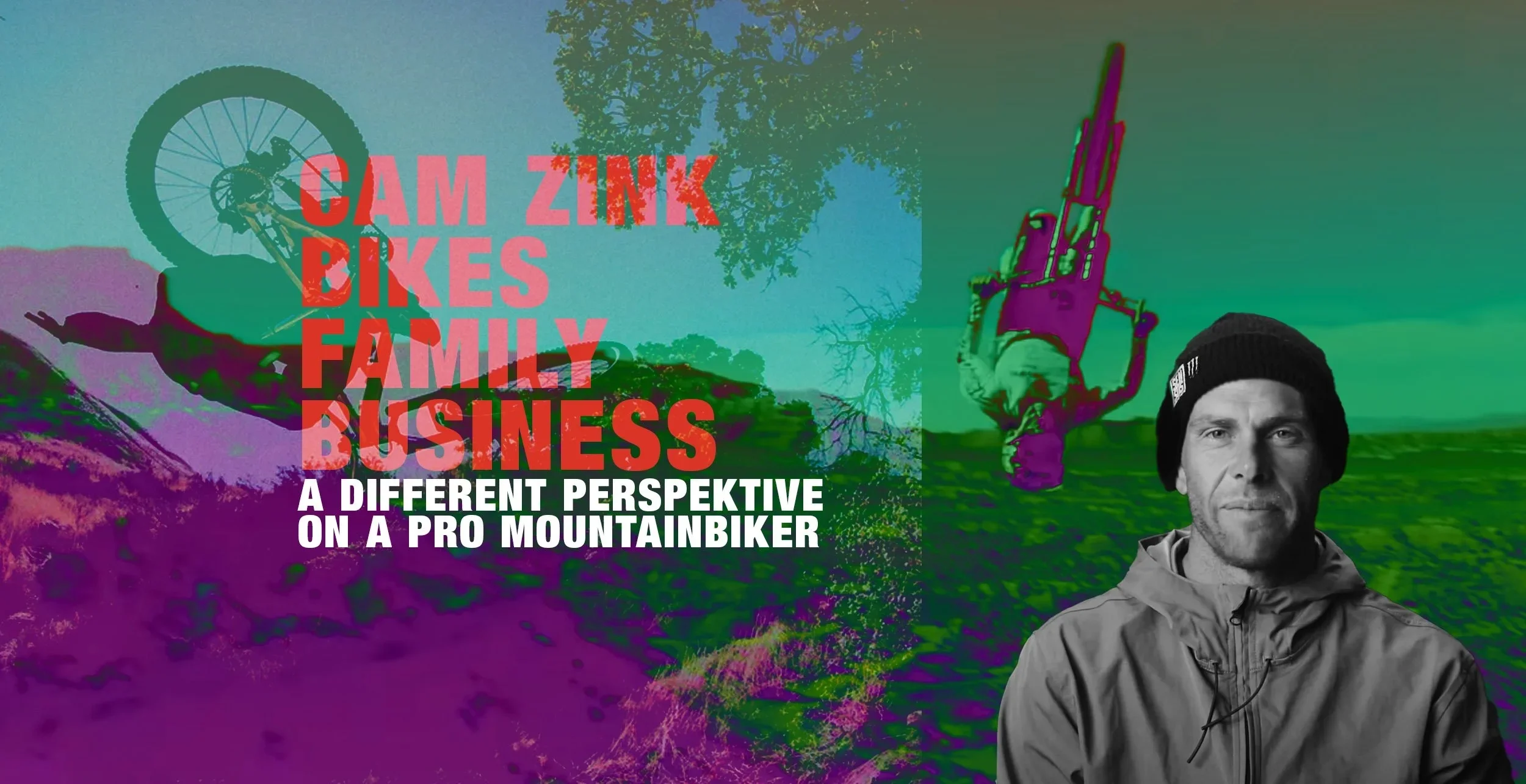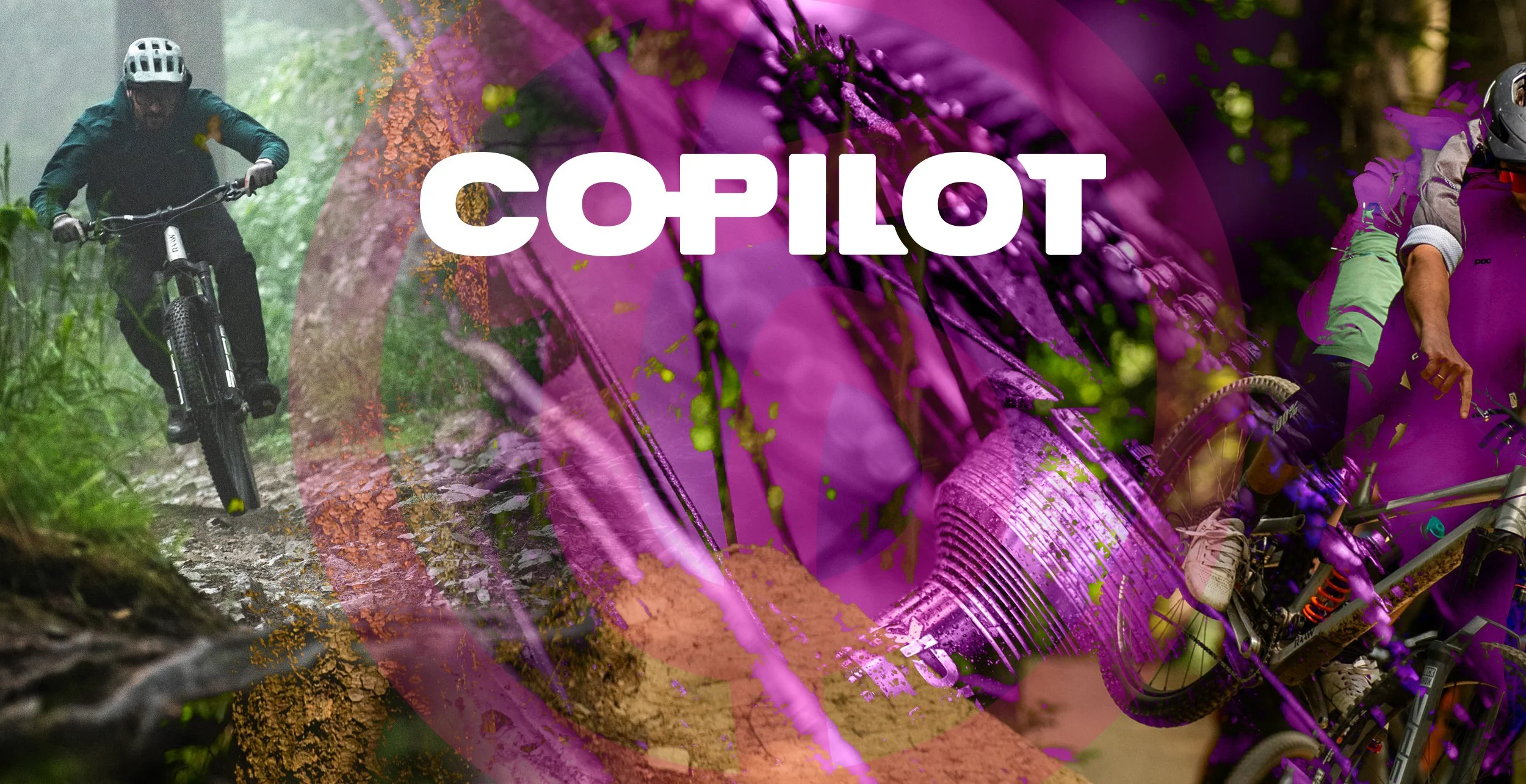Anti-Brake-Dive – unknown or unnecessary?
Lesezeit: 10 – 11 Minuten
Mountain bike nerds are cracking one open, while NPCs are rolling their eyes. Anti-brake-dive—is this just another overhyped trend, following anti-squat, offset, and pedal kickback? It might be making noise, but the concept is definitely nothing new—at least not on non-motorized bikes. And then there was that experiment by Push Industries…
Fundamentally, anti-brake-dive is about maintaining chassis balance and giving you more confidence on the trail. Since Matthias Reichmann from EMRG is a doer, he pursued the idea and built it directly into a linkage. In this article, you'll learn what anti-brake-dive is all about and why more research should be done on it.
What is Brake-Dive about?
When a two-wheeled vehicle experiences significant deceleration, the axle load shifts forward, typically causing the front suspension to compress (commonly referred to as "brake dive," "diving," or "nosediving"). This results in a change to the head tube geometry—altering the trail, rake, and wheelbase.
This phenomenon is known as "brake dive." It can lead to unwanted instability, as the suspension effectively becomes stiffer, the front end becomes more heavily loaded, and the steering and braking behavior can change unpredictably.
In the 1980s, motorcycle manufacturers like Yamaha, Kawasaki, Suzuki, and Honda introduced anti-dive systems, often in the form of additional mechanical linkages or hydraulic controls. While these classic systems have largely disappeared today, their principles have found a place in modern geometric and electronically controlled solutions. The automotive sector also employs solutions that positively influence handling characteristics and better control unwanted vehicle movement.
For those who love to dive into the technological nerd rabbit hole, researching the approaches of motorcycle manufacturers is a great starting point. Just follow the white rabbit:
| Manufacturer | Year / Model | System Name | Details |
|---|---|---|---|
| Yamaha | circa 1981 (XJ750A) | Anti-Nosedive Forks | Early hydraulic anti-dive system; part of Yamaha's technology timeline. |
| Kawasaki | Early - Mid 1980s | AVDS (Automatic Variable Damping System) | Used on GPZ models; brake pressure alters fork damping. |
| Suzuki | Early 1980s | ANDF (Anti Nose Dive Forks), PDF | Hydraulically controlled systems to reduce suspension compression during braking. |
| Honda | Early - Mid 1980s | TRAC (Torque Reactive Anti-Dive Control) | Mechanical-hydraulic solution; brake caliper activates valve for damping adjustment. |
| Aprilia | circa 2020 (Patent) | — | Patented anti-dive fork with active control; modern electronic implementation. |
| Ducati | from circa 2018 (Multistrada V4, Panigale V4) | DSS EVO (Ducati Skyhook Suspension EVO) | Electronically controlled semi-active suspension; sensor system prevents dive and squat through real-time damping adjustment. |
| Öhlins | from circa 2013 (TTX EC / Mechatronic) | TTX EC Mechatronics | Electronically controlled damping; sensor-based adjustment of rebound and compression to compensate for brake dive. |
| Bilstein | from circa 2009 (production start in cars, motorsport adaptation later) | DampMatic | Mechanical-hydraulic system with valve control via piston position; automatically reduces dive during braking without external sensors. |
| Fox | from circa 2018 (Motorsport version) | Live Valve | Electronically controlled dampers with real-time control via ECU; reduces dive and pitch through instant damping adjustment based on sensor input. |
Technical description
The purpose of anti-dive systems is to limit the compression of the front suspension fork—the actual "dive"—when the front brake is applied. Everyone knows this phenomenon: you want to brake hard, and it pulls you forward over the handlebars. We counter this action by pushing against the handlebars.
This is based on what's known as Newton's First Law, also referred to as the law of inertia.
Recall your time at school when physics wasn't yet cool because nobody used mountain bikes as examples: A body maintains its current state of motion (whether at rest or moving at a constant velocity) unless acted upon by an external force, or unless the net force acting on it is zero.
How to avoid brake-dive?
Hydraulic solution
On mountain bikes, the primary approach to managing this is through the air spring curve and low-speed compression damping. However, when you adjust the damping, you inevitably create compromises. The goal is to use what's known as shaft speed to target specific forces in isolation, but out on the trail, it's not always possible to clearly distinguish between them. The fork cannot directly determine whether a force (an impact/compression) is coming from braking, landing from a jump, or hitting a root.
With Formula, you can choose between different CTS cartridges with different damping curves. Depending on the CTS, you feel a noticeable difference when you grab the front brake hard.
Mechanische Lösung
Mountain bikes and their developers still find inspiration in motorcycles. As far back as the 1980s, motorcycles had "anti nosedive forks" that used special designs to counteract this phenomenon. A comparable concept is the established anti-squat, where chain tension creates a counterforce against the suspension squat that occurs when you pedal. (Podcast with Dave Weagle)
So, if you mount a brake caliper in a way that allows it to pivot, you can use a linkage mechanism to positively influence the force vectors or even activate a valve in the fork that makes it stiffer. The latter is what Honda called TRAC (Torque-Reactive-Antidive-Control).
An excerpt from an old Honda manual.
BMW named their kinematics-based system Telelever/Duolever. This system operates via a wishbone mechanism, unlike the established telescopic fork standard on a modern mountain bike. This architecture reduces fork dive under braking forces.
Left: BMW Telelever- and on the right the Duolever-System.
Electronic solution
In the motorcycle world, there are numerous sensor-based solutions. These systems detect the current riding situation—braking, accelerating, or leaning in a corner. Does that sound far removed from mountain biking? Not at all. Think of Fox Live Valve, RockShox Flight Attendant, or the ABS from Bosch.
The challenge here is power supply, as these systems can be quite power-hungry. At the same time, no one wants additional weight on the bike or the hassle of running even more cables.
Fox Live Valve Neo with its battery on the piggy and the two sensors which will be mounted at the brake mounts. Both contain another battery.
In the RockShox ecosystem, the Flight Attendant system uses batteries integrated into the fork, the crank spindle, and the shock.
Bosch's ABS control unit is positioned between the brake lever and the brake caliper. It is designed to make braking safer and prevent the front wheel from locking up and skidding out.
Everything is a Compromise
What are you getting out of a system which avoids Brake-Dive?
Less brake-dive means a smaller change in the head angle during braking. This results in a more stable front end, more consistent geometry, and the fork remains more active since it isn't forced deep into its travel.
Potential downsides
Depending on whether one pursues a mechanical or hydraulic solution, compromises are made.
Sensitivity with Increased Damping: As mentioned earlier, a fork cannot clearly distinguish whether you are braking or if another force from a landing is acting upon it. Consequently, it can no longer ideally absorb all terrain irregularities. Consistent traction is therefore not always guaranteed, comfort suffers, and the feedback to the rider's hands can become too harsh.
Leverage-based solutions are, first and foremost, polarizing. This was already the case with Dave Weagle's Trust fork. Aside from the look, you're also dealing with more components. These require maintenance and are, of course, always a potential point of failure.
Trust Shout – Outstanding and special. The look polarized. Oh and btw – the patent got bought by Specialized.
PUSH INDUSTRIES also did some research. Unfortunately the topic wasn’t further pursued.
The idea of Matthias Reichmann
"To counteract the moment created by the dynamic load transfer during braking, it seems practical to use the force from the brake caliper to generate an opposing moment, which is introduced as a force into the fork stanchions. This results in the fork diving less—almost not at all.
However, an anti-dive of over 100% would be dangerous because the fork would then begin to extend under braking. Therefore, we stayed just under 100%. This allows the fork to remain active during braking and still compress.
This means you still have the full suspension travel available. The support happens exactly when you need it—during deceleration—otherwise, the fork works normally as well. In other words: my geometry is not negatively affected. My fork doesn't dive.
There are also examples from the automotive sector. I once had a 2004 Audi A6. It had a five-link front axle. You could slam on the brakes and the front would barely dive. You had a very comfortable suspension that still felt dynamic to drive because it was kinematically well-designed. And that is the underlying principle that is also intended to be implemented on the mountain bike here.
In contrast to a car, the implementation on a mountain bike is more difficult because the pitching moment from the dynamic load transfer depends on the height of the center of gravity. On a mountain bike, this center of gravity is more dynamic than in a car. The rider's height and riding position, which cannot be calculated statically and is different for everyone, play a role here.
The wheelbase also has an influence. However, it's more or less constant on most mountain bikes, but by estimating the center of gravity height, the system, as we have now implemented it, actually works exactly as it should. When I, at 1.81m, 79kg, and with a normal riding position, brake extremely hard using only the front brake, the fork compresses a few millimeters to maybe 1 cm—meaning we are under 100% anti-dive and in a range where we still retain almost the full suspension travel.
This is currently still a prototype and the system needs to become lighter. Right now, we are only researching the kinematics.
You have to consider that it's also completely normal in cars to have an anti-dive system on the front axle—though more so in the premium segment."
– Matthias Reichmann | EMRG
Matthias’ Prototyp-System offers slightly under 100 % Anti-Dive. Bolted to a regular Intend upside-down-fork.
Conclusion
New concepts only prevail against resistance. In online forum comment sections, this seems to be the first law. Today, however, there is hardly a bike developed without considering anti-squat. Eliminating brake dive at the front is the logical conclusion. Whether the look will catch on in our industry, where fashion often replaces function, remains to be seen.
You want more rabbit hole content?
Author – Jens Staudt
Height: 6'3"
Weight: 209 lbs
Riding Style: With his racing background, his lines are calculated, even when it gets rough. If possible, he'll jump over sections. You should use the full width of a trail. Others would call it—uncompromising.
Motivation: A product should be worry-free and last as long as possible. Less time spent on maintenance means more time for riding. He enjoys tinkering and figuring out how the bike can be optimized further.










